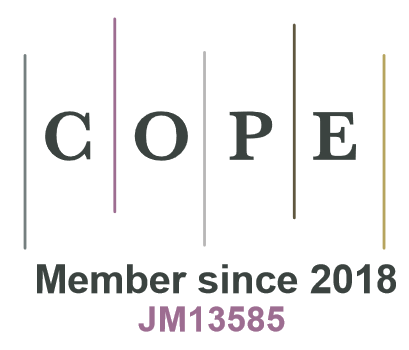Articles containing the keyword 'soiden ojitus'
Category : Article
The paper is a review on utilization of peatlands in forestry in the countries of boreal zone: Finland, Norway, Sweden, Canada, the United States and the Soviet Union. First, the concept of peatlands, the types of peatlands throughout the zone are defined, and the use of natural peatlands is described. Finally, the drainage of peatlands for forestry purposes in the countries is reviewed. According to the statistics, a total of 13 million ha of peatlands have been drained in Fennoscandia and the Soviet Union.
The present study deals with the effect of forest drainage on some quality factors of brook waters. Under study were several brooks in the basin of the Kiiminkijoki River as well as its main tributary, the Nuorittajoki River. These are located in Northern Finland and belong to the international water program Project Aqua.
The following values were determined for the water samples: pH, electric conductivity, colour, concentration of suspended solids., NO2, NO3, and NH4 nitrogen concentrations, dissolved and total phosphorus, and Ca, Mg, K and Fe concentrations. Water quality in the brooks was monitored prior to and after ditching. A statistically significant change was noted in colour, in the concentration of suspended solids, in the NH4 concentration and in some brooks also in the pH value and in the total phosphorus, K, and Fe concentrations.
The PDF includes a summary in English.
The forestry working group of the committee for scientific and technical cooperation between Finland and the Soviet Union initiated cooperation work between the two countries in the field of forestry almost ten years ago. The Finnish organizations the Department of Peatland Forestry, the Finnish Forestry Research Institute, and the Institute of Peatland Forestry of the University of Helsinki participated in the activity. From the Soviet Union the participants have been the Ministry of Forestry, the Russian Federation of USSR, and the Forestry Research Institutes of Leningrad and Estonia.
This paper includes the papers presented in the joint symposium arranged at the Forest Field Station of University of Helsinki on 17.9.1979. The 9 Russian lectures and the 8 Finnish ones, are presented either in their entirety or slightly condensed variably in Finnish, English or Russian. The summary of the seminar is presented in English and in Russian.
The study describes the relationships between a method developed by the author for the calculation of the profitability of forest drainage and the old biological method. The calculations were based on empirical data, and they aimed at finding out the effect of a variation in the profitability limit in the areas in hectares to be drained, and on the profitability of drainage. The study deals also with the profitability of present-day drainage activities. The results showed that the profitability coefficient (the ratio between the discounted increase in returns and the costs of drainage) averages 3.04 for the whole country. The corresponding value was 5.68 for Southern Finland, 3.19 for Central Finland and 1.67 for Northern Finland.
The PDF includes a summary in English.
The study attempts to establish to what extent the present regional allocation of the forest improvement subsidies equalize the profitability of forest drainage in Finland. The benefit/cost ratio has been used to describe the regional variation of the profitability
The study revealed that the forest improvement subsidies granted in 1968, even the highest possible subsidies, did not equalize the profitability of forest drainage. According to the results, the northern regions are at a disadvantage compared to the southern parts of the country. To fully equalize the profitability of forest drainage the average subsidies granted in 1968 should have been raised in the second financing zone from 22 to 32%, in the third zone from 32 to 60%, and in the fourth, northernmost zone from 43 to 86%. The study also suggests that the boundary lines of the financing zones should run, at least in Central and Northern Finland, from southeast to northwest instead from east to west, as it is now.
The PDF includes a summary in English.
About one third of the land area of Finland is covered by peatlands, furthermore, some mineral soils are troubled by excess water. Due to the prevalence of peatlands, forest drainage has been the most important form of forest improvement work. Consequently, peatlands have been an extensively studied topic within forest sciences in Finland. This paper gives a review on the central research subjects in science of peatlands, introducing little less than a hundred of the hundreds of publications published in the field. The author describes in more detail research on the formation and area of peatlands, peatland types and their suitability for forest draining, site factors on peatlands, techniques of forest ditching and the management of peatland forests.
The PDF includes a summary in Finnish.
Category : Article
The study deals with the development during the 1950s and 1960s of a stand growing on peatlands which had been drained in the 1930s. The following characters were determined by measurements: the volume of the growing stock, the volume increment, the relative increment, the increment percent and the increment curves. Moreover, the possible changes taking place in the difference between tree growth along the ditches and in the middle of the strip between ditches were studied. In addition, the regional variation in increment was studied; this question was studied as the regression between the relative growth and the temperature sum. The results were compared with other Finnish investigations into the regional variation of increment.
The volumes of the growing stock had increased during the course of twelve years by 70–10 m3 /ha depending on the site type and climatic zone concerned. The relative increment had dropped in each case studied. As a matter of fact, this is only to be expected because the volumes had increased and the absolute growth had remained more or less unchanged. The development of the increment percent was compared with mineral soil stands in the case of Southern Finland, both uncut stands and stands treated with cuttings. According to the results obtained, the development of the increment percent was better in the present material than in uncut forests, but in some cases it did not reach the level of tended stands. The revival of the tree crop after draining takes place at different rates in the vicinity of and, on the other hand, at greater distances from the ditches and that this relationship is dependent on the fertility of the site.
The PDF includes a summary in English.
The study is a part in a more comprehensive series of investigations into the profitability of forest improvement measures. The present paper describes a new method for calculation of the suitability of various peatlands for forest drainage. According to this method, the net profit is calculated as the difference between the gross profit and the costs, and the profitability coefficient, as the ratio between the gross profit and the costs. The most important factors used for calculation of the gross profit and the costs are as follows: the site quality index, the volume of the tree stand capable of development at the time of draining, the temperature sum and the stumpage development at the time of draining, the temperature sum and the stumpage price. For use in the field, simplified auxliary tables have been worked out.
The PDF includes a summary in English.
The aim of the study was to determine how the spacing of drains affects the economic results of forest drainage projects. On the basis of empirical material consisting of 411 sample plots, it is presented marginal cost curves showing how many meters more of drains it is needed to increase the value of stock, 35 years after the drainage, by a value equivalent of one cu.m of coniferous pulpwood. Results indicate that wider spacings ought to be used on poor sites, on sloping swamps, and in the north.
The PDF includes a summary in English.


